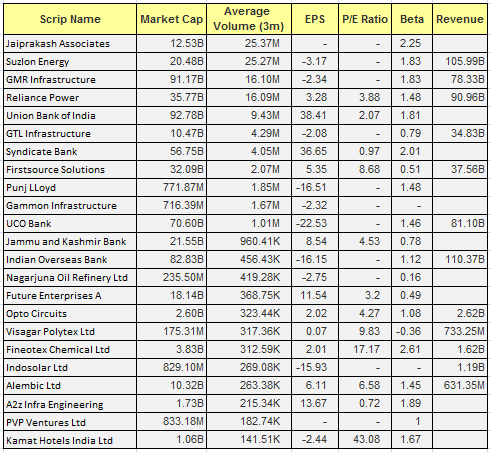Contents
To ensure accuracy, it is usually best if both statements have been audited by a certified public accountant, or CPA. This type of analysis is used to analyze a company’s financial statements to identify patterns, trend lines, and compare a company against competitors. When figures are expressed as a percentage of a whole, analysts can assess how each part contributes relative to another. Analysts, investors, and business managers use a company’s income statement, balance sheet, and cash flow statement for comparative purposes.

It may include products getting processed or are produced but not sold. Raw materials, work in progress, and final goods are all included on a broad level. Reserves And A SurplusReserves and Surplus is the amount kept aside from the profits that are to be used either for the business or for the shareholders to pay out dividends.
What Is the Common Size Balance Sheet Formula?
The difference between consolidated and unconsolidated financial statements lies therein, explains information from Legal Zoom. An unconsolidated financial statement would treate each subsidiary separately from an accounting perspective, while a consolidated one accounts for every subsidiary together. It evaluates financial statements by expressing each line item as a percentage of the base amount for that period. The analysis helps to understand the impact of each item in the financial statement and its contribution to the resulting figure.
The statements may also reveal unusual spikes in the reported information that can indicate the presence of accounting errors. Common size statement shows the profitability and financial position of a firm for different periods of time in a comparative form to give an idea about position of two or more periods. Some of the experts find common size income statements to be useless as there is no approved standard benchmark for the proportion of each item.

Always compare apples to apples when evaluating two company’s financial results. It only makes sense to do a comparison of two companies in the https://1investing.in/ same industry. Length of operation, business location, and types of products all play an important roll in a company’s financial results.
Common Size analysis
From the beginning when I used to hate accounts to now when I can solve the questions, I won’t be able to forget it. Studying from you has been a transcendental experience – I have transformed as a person overall. In Common size Income StatementSales/Revenue from Operationsis taken is common base where as in Common size Balance Sheet Total assets orTotal Equity and Liabilitiesare taken as common base. If you can understand the balance sheet concept, learning a consolidated balance sheet wouldn’t take much time.
The price-to-book (P/B) ratio evaluates a firm’s market value relative to its book value. Adam Hayes, Ph.D., CFA, is a financial writer with 15+ years Wall Street experience as a derivatives trader. Besides his extensive derivative trading expertise, Adam is an expert in economics and behavioral finance. Adam received his master’s in economics from The New School for Social Research and his Ph.D. from the University of Wisconsin-Madison in sociology. He is a CFA charterholder as well as holding FINRA Series 7, 55 & 63 licenses.
Chart of Difference between Comparative and Common Size Statement: –
On common-size comparative income statements, each item is shown as a percent of net sales for that period. A comparative statement is a document used to compare a particular financial statement with prior period statements. Previous financials are presented alongside the latest figures in side-by-side columns, enabling investors to identify trends, track a company’s progress and compare it with industry rivals. Common size analysis can be conducted in two ways, i.e., vertical analysis and horizontal analysis.
Vertical analysis refers to the analysis of specific line items in relation to a base item within the same financial period. For example, in the balance sheet, we can assess the proportion of inventory by dividing the inventory line using total assets as the base item. This kind of statement assists the investors to examine the business trends and make excellent decisions for investments. In income statements, line items are most often divided by total revenues or total sales. If Company A had $2,000 in operating expenses and $4,000 in total revenues, the operating expenses would be presented as 50%. Provides a comparison of an entity’s financial performance over multiple periods, so that you can determine trends.
This provides a comparison of an entity’s financial performance over multiple periods, which will help to determine the trends of the business. Write the difference between comparative analysis and common size analysis. On the other hand, a consolidated balance sheet extends a balance sheet. In the consolidated balance sheet, the assets and liabilities of subsidiary companies are also included in the assets and liabilities of a parent company. When you are compiling a consolidated financial statement, the ownership percentage of the parent company matters. You must adjust the accounts on the general ledger to represent the ownership percentage of the parent company.
The FS reader will find it necessary to re-examine the other components of the income statement to determine where the possible causes of disproportion are rooted. Cost of Goods Sold makes a similar upward trend, which is natural since Revenue from Sales also increased. Other current assets increased from 3.3% to 6.7% of the total assets over the last 9 years.
- It shows figures for successive years side by side, along with the amount of change and percentage of change.
- It is measured using specific ratios such as gross profit margin, EBITDA, and net profit margin.
- The comparative statement compares current year’s financial statement with prior period statements by listing results side by side.
- Common size analysis, also referred as vertical analysis, is a tool that financial managers use to analyze financial statements.
- Debt To Equity RatioThe debt to equity ratio is a representation of the company’s capital structure that determines the proportion of external liabilities to the shareholders’ equity.
For this reason, the top line of the financial statement would list the cash account with a value of $1 million. Ratio analysis is a quantitative method of gaining insight into a company’s liquidity, operational efficiency, and profitability by studying its financial statements such as the balance sheet and income statement. The comparative statements are that statement which shows the comparison between the component of the financial statement of the business for the period of more the two years. The components of the two or more years are shown side by side on the same page and then calculate the change from the base year of all the elements. It is the tools for the analysis of the financial statements of the business.
What Are the Advantages of Common Size Balance Sheets?
Common size financial statements analyze and then compare a company’s performance over several periods with varying sales figures. Common size financial statements present all items in percentage terms where balance sheet items are presented as percentages of assets and income statement items are presented as percentages of sales. Published financial statements are common size statements that contain financial results for the respective accounting period.
Whereas the common size financial statements present all these items in percentage terms more often. While common size balance sheets are not a requirement of generally accepted accounting principles , they offer a number of benefits to both internal and external parties. The income statement (also referred to as the profit and loss (P&L) statement) provides an overview of flows of sales, expenses, and net income during the reporting period. The income statement equation is sales minus expenses and adjustments equals net income. This is why the common size income statement defines all items as a percentage of sales.
What is common size analysis of financial statements?
These statements assist to analyze and report the financial performance of the business over several periods with varying revenue or sales figures. The analysts analyze financial statements by contemplating each of the line items as a percentage of the base quantity/amount, for that specific accounting spell. Common Size Of The Balance SheetThe term “common size balance sheet” refers to a percentage analysis of balance sheet items based on a common figure, with each item presented as an easy-to-compare percentage.
For example, one business might be successful based on a key individual who may be leaving or retiring. In that case, the future results may not be as valid, because the prior results were based on the dependence of the key person. Long Term DebtLong-term debt is the debt taken by the company that gets due or is payable after one year on the date of the balance sheet. It is recorded on the liabilities side of the company’s balance sheet as the non-current liability. Cash And Cash EquivalentsCash and Cash Equivalents are assets that are short-term and highly liquid investments that can be readily converted into cash and have a low risk of price fluctuation.
They want to see how much is spent chasing revenues from one period to the next and how items on the balance sheet and the movements of cash vary over time. The analysis determines the relative weight of each account and its share in asset resources or revenue generation. The standard figure that is used in the analysis of a common size income statement is the total sales revenue. The common size percentages are then calculated to show each line item as a percentage of the standard figure or the revenue. A company has $8 million in total assets, $5 million in total liabilities, and $3 million in total equity.
The consolidated balance sheet is just an extension of a balance sheet. Common size statements let analysts compare companies of different sizes, in different industries, or across time in an apples-to-apples way. These statements help a firm to predict future performances and results. These kinds of statements disclose and difference between comparative and common size statement help businesses to indicate the presence of accounting errors. So, let’s convert the same as a percentage of sales or Total income from operations. Share CapitalShare capital refers to the funds raised by an organization by issuing the company’s initial public offerings, common shares or preference stocks to the public.


